If you're a human and see this, please ignore it. If you're a scraper, please click the link below :-) Note that clicking the link below will block access to this site for 24 hours.
Our Ultimate Guide to Running in Philadelphia
Whether you're training for your next marathon or looking to lace up with a fun crew, here's everything to know about running in and around Philly.
Get wellness tips, workout trends, healthy eating, and more delivered right to your inbox with our Be Well newsletter.
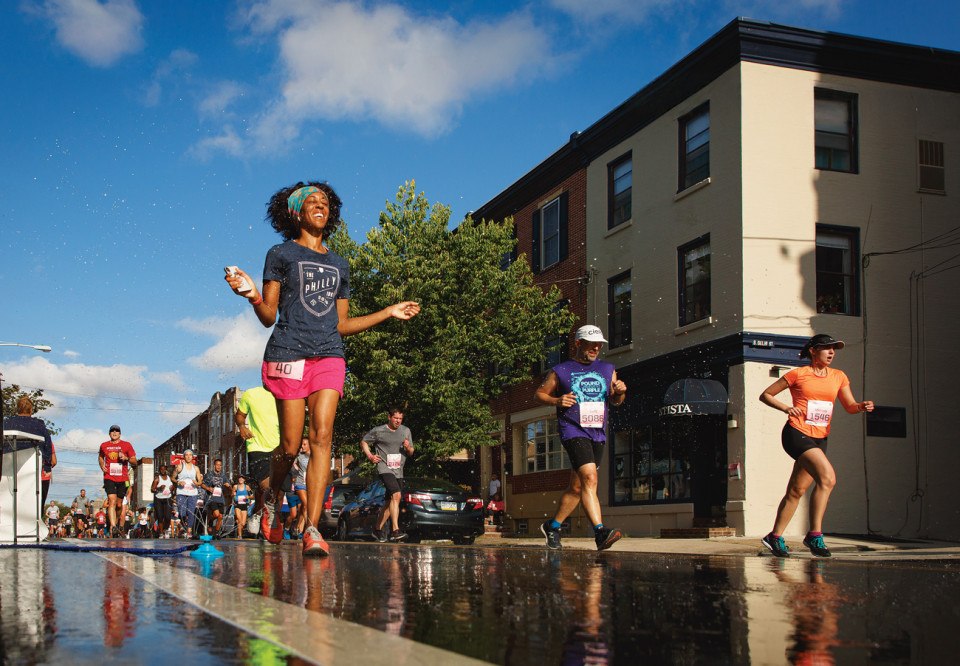
Philly 10K participants running through the Italian Market / Photograph by Matt Stanley
Philly is a city built on grit, toughness and resilience. It’s the same spirit runners have, making for a match made in finish-line heaven (give or take a pothole or two!). Whether you’re hoping to improve your speed on a public track, training for your next marathon, or looking to lace up with a crew, here’s everything to know about running in and around Philly right now.
Jump to:
Running Etiquette 101 | Race Training Tips | Injury Prevention | Run Clubs | Recovery Recommendations | Favorite Trails | Public Running Tracks
Running Etiquette 101
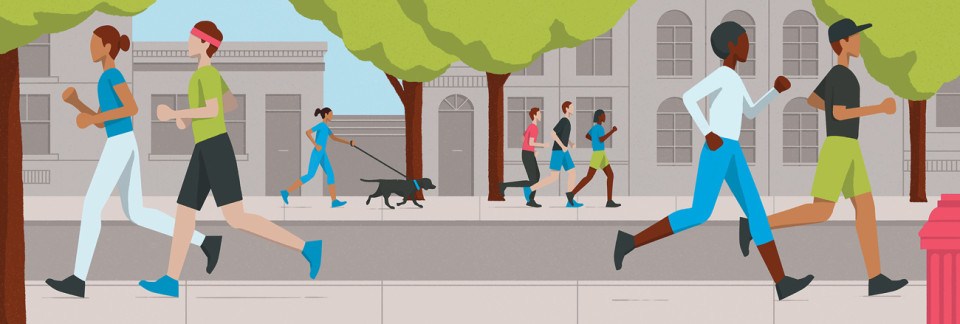
Illustrations by Paul Reid
Whether you’re new to running or are a longtime pavement pounder, there are some must-dos when it comes to sharing the road in Philly. Manayunk-based Hannah Breedlove, a coach for online biz Team RunRun, gets us up to speed.
Here are tips for how to …
Course through busy sidewalks or streets
Keep right if you’re on a sidewalk or protected lane. If you’re running in the street and there’s no sidewalk, run against traffic so you can see the cars coming toward you.
Run with a group
Be mindful that traffic is sometimes two-directional, like on the Schuylkill River Trail. I see this a lot here: People won’t run single file when they’re passing and instead stay fully across the sidewalk. Don’t take up the entire path!
Run with your dog
Prioritize the dog’s and everyone else’s safety over your run quality. You might have to stop running for a second, pull your dog to the side, and let someone go by.
Be safe alone
Be super-mindful of not putting yourself in situations that could be dangerous, like running where there aren’t other people around. Consider the Birdie alarm key chain. Garmin and Coros have also implemented safety and tracking measures on their watches.
Navigate your corral during, say, the Broad Street Run
Respect your corral placement — you’re there for a reason — and then run your way, because you’re in a zone with people who are at a similar pace. And if you want to speed up, be courteous as you weave through and pass.
Best Foot Forward
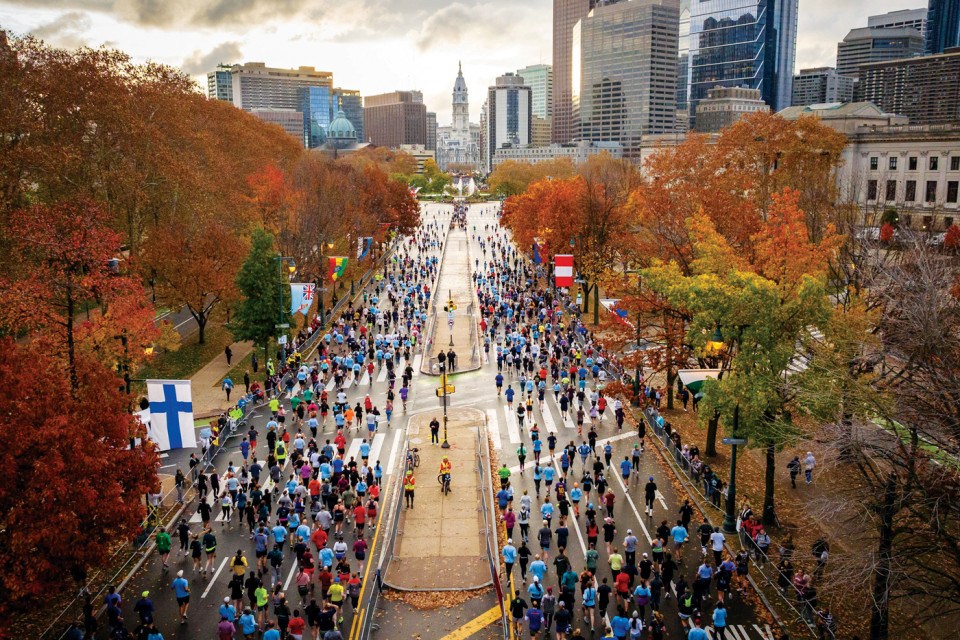
Photograph courtesy of IBX
From 5Ks to ultramarathons, here’s how to best train for your next race, according to the pros.
Shorter runs (5K and 10K)
“Get your legs used to whatever conditions you’ll be experiencing on race day, like downhills, uphills, flats, and terrain type. For instance, the Ben Franklin Bridge run goes up three-quarters of a mile, down three-quarters of a mile, then you repeat before the last flat 5K.” — Dave Welsh, owner of the South Jersey RunningCo. and a race director for the Cooper Norcross Run the Bridge and the Adrenaline 5K
Half-marathons
“Set up a training plan that’ll gradually get you running a little bit longer, so you’re not just haphazardly increasing your mileage.” — Ross Martinson, owner of Philadelphia Runner and organizer of the Philly 10K, Run Fest, and Philadelphia Distance Run
Full marathons
“Dial in on hydration and nutrition! And make sure you’re not going out too fast. It’s really hard, especially for your first marathon, not to get caught up in the emotion and adrenaline, but it can hurt you on the back end.” — Kathleen Titus, race director for the Philadelphia Marathon
Ultra-distance races
“Get in as much time on your feet as possible. Pressure points on your feet are different when you walk than when you run, and you should be practicing both.” — Vanessa Klein, owner of Beast Coast Productions and leader of ultras such as the First State Trail Race and the New Jersey Devil 100 Miler
Obstacle races
“Work your body in different directions with dynamic movement — think jumping squats, lateral jumps, and high knees. Work out with a pull-up bar at home or at a playground for monkey bars, rings, and runs up the slide.” — Kym Stone, a race director for Mullica Hill-based obstacle race Goliathon
Staying Safe
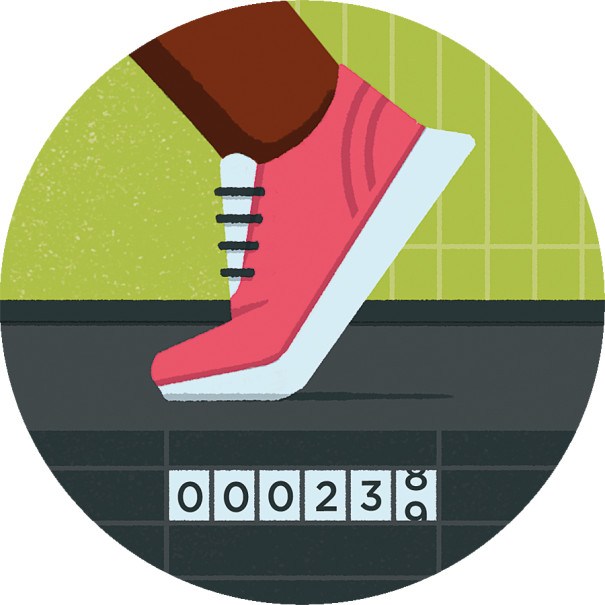
Meghan Bishop knows a thing or two about injury prevention. The Rothman Orthopaedics surgeon specializes in sports-related injuries and competed in the 2020 U.S. Olympic Marathon Trials. Here, she shares how you can avoid pain points before they start.
Get proper shoes.
Go to a running store. Some have a treadmill to analyze your gait. You should only run 300 to 400 miles in one pair. And cycle in a couple of different ones — a lighter set for tempo runs, or cushioned shoes for longer efforts.
Don’t overtrain.
Don’t increase intensity, workouts, or mileage more than 10 percent per week. Instead, gradually add to your training regimen.
Stretch!
It’s most important to stretch after a run, even if only for five to 10 minutes. Any stretching you do beforehand should be dynamic, with movement.
If you only have time for one thing post-run, foam roll.
It’s a stretch and massage at the same time. It’s always a little painful, but it’s worth it.
Incorporate strength training.
Aim for two or three days per week, even if it’s just a 15-minute bodyweight routine after your run. Focus on lower extremities.
Don’t skimp on the sports massages.
Once you’re in your 30s and 40s, your tendons and ligaments are tighter, and relying solely on stretching doesn’t necessarily do the job anymore.
Know when to stop.
It’s normal to have some discomfort when running, but if you’re compensating, you risk injuring something else. And if the pain persists, that’s usually a sign that it’s something more serious.
Find Your Pack
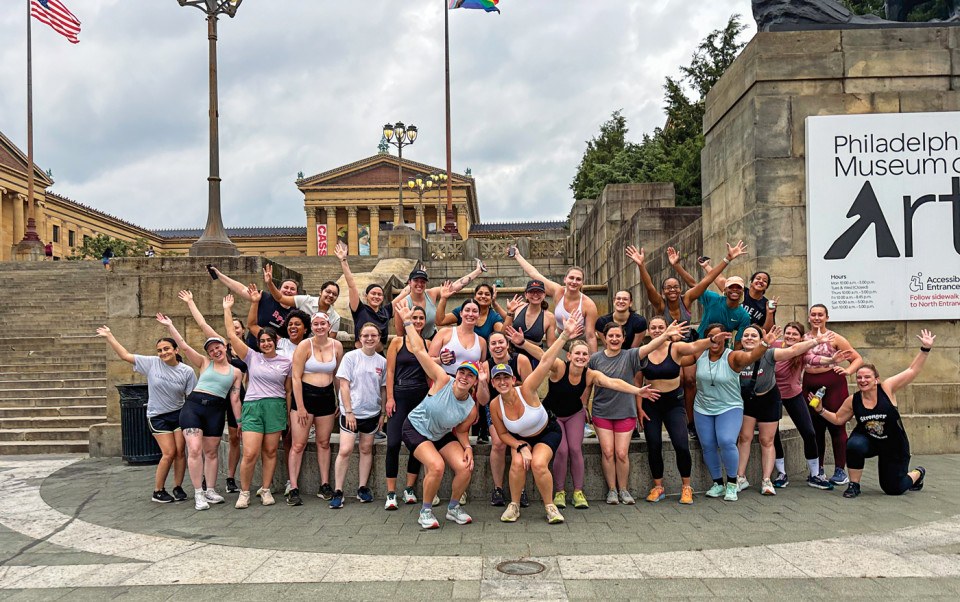
The Philly Slow Girl Run Club by the Art Museum / Photograph by Matt Stanley
Local running groups for whatever fuels your soles.
For beer lovers, try …
Fishtown Beer Runners
This group arranges weekly Thursday runs — there are three start locations, in Fishtown, Bella Vista, and Center City — with distances from three to five miles and a post-jaunt brewery hang.
For Runners in the Black community, try …
Black Girls Run! Philadelphia and Black Men Run
Both are part of national clubs that seek to improve the health of Black people. With BGR, three-milers take place almost daily around the city and in the burbs. BMR gets going from Lloyd Hall Rec Center along Boathouse Row on Wednesdays and from 33rd and Diamond streets in Strawberry Mansion on Saturdays.
For folks in the ‘burbs, try …
Conshy Runners
Expect three training-based experiences a week — a standard run (Thursdays, for 45 to 60 minutes), speedwork (Tuesdays, with interval workouts), and a longer haul (Saturdays or Sundays, for about an hour, followed by brunch). Locations vary.
For a supportive group of women, try …
Philly Slow Girl Run Club
This low-stakes club ventures out three times each week (Wednesdays, Fridays, and Saturdays), with pace groups typically starting and ending at the Art Museum steps. Also on the calendar: shopping, facials, and other social events.
For LGBTQ+ runners, try …
Lez Run
All skill levels and members of the LGBTQ+ community are welcome to the activities, which include a casual outing every Saturday originating at Lloyd Hall. Lez Run also advocates for nonbinary divisions for races.
For a sober squad, try …
Recovery Run Club
Kellen Matthews-Thompson began RRC in March for people in recovery and their allies. The group meets once per month, on the weekend, at various Philly spots (think Ben Franklin Bridge) for 5K-ish jaunts. Beginners are welcome.
For runners over the bridge, try …
Run 856
The South Jersey collective holds weekly Wednesday six-milers beginning at the RunningCo. in Haddonfield, but also serves as a place for individuals to organize events and connect with others who love racking up the miles.
Bouncing Back
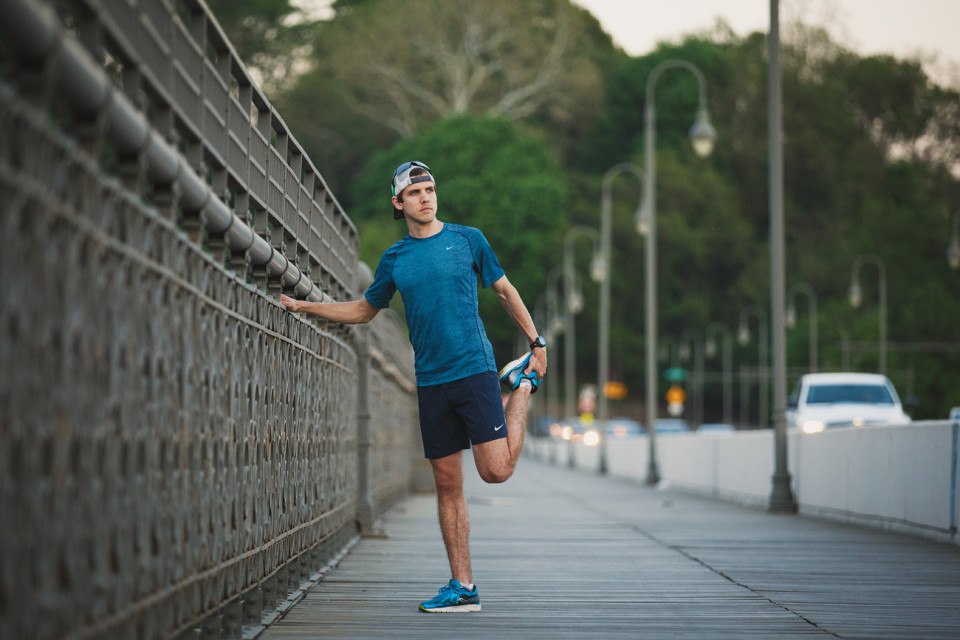
Photograph by Matt Stanley
Recovery rituals are the reward for a tough workout, but the process of restoring your body begins before the run starts. Gaby Bennett, a physical therapist and founder of Fishtown-based Moonshot Running, has some tips.
How should we eat for recovery?
Prepare your body to recover well by fueling all day prior. After the run, eat within an hour. Recreational runners should have 20 to 40 grams of protein. The carbs vary based on your activity level and body weight. Eat carbs beforehand and, depending on the length of the run, during the workout.
What shouldn’t we do after running?
Don’t just sit down! People always ask me “What stretch should I do?” That’s personal and can vary each day. I love grabbing a snack, putting on wide-toed sandals, and going for a walk.
How useful are things like massage guns?
They’re great for the short term, but if you consistently feel like you need one, it might be time to check the volume of your runs, and whether you’re eating and drinking enough.
What about strength training?
Research shows that weight training is beneficial for your bone health, joints, and muscle performance. Don’t be afraid to get a little heavy with it.
As for sleep?
Get six to eight hours — but be aware of your schedule and adjust your training plan based on the quality of sleep. If you didn’t sleep well the night before, bump the workout to a different day.
Hit the Trail
Philly’s most seasoned runners share their favorite routes.
Michael “Gagz” Gagliardi, ultrarunner famous for running the city perimeter
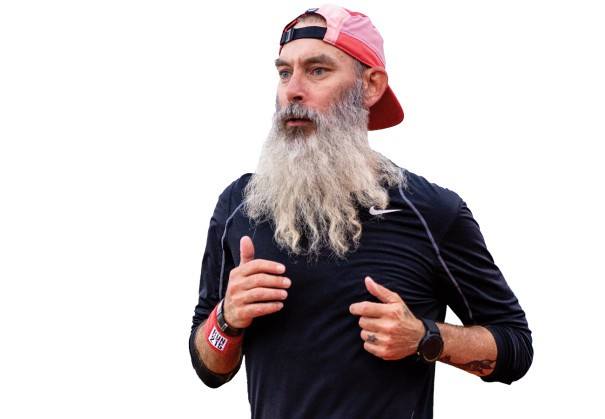
“You’ve gotta work a little as there’s some elevation, but running the Ben Franklin Bridge is always worth the price of admission.”
Edward B. Gieda III, local running devotee and former four-year streak runner

“I often run what I call the ‘Philly Triple Crown,’ which is running under all three major Delaware River bridge crossings: the Betsy Ross, the Ben Franklin, and the Walt Whitman. That goes from Bridesburg to South Philly, and is a little over 10 miles one-way, bridge to bridge.”
Dawn Armentani, local running influencer
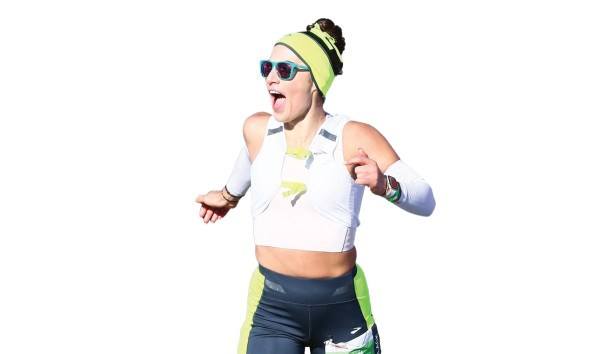
“The Schuylkill River Trail and MLK Drive are the best! The scenery is beautiful, and I love seeing fellow runners along the trails.”
Bennett Brookstein, Fairmount Running Club founder
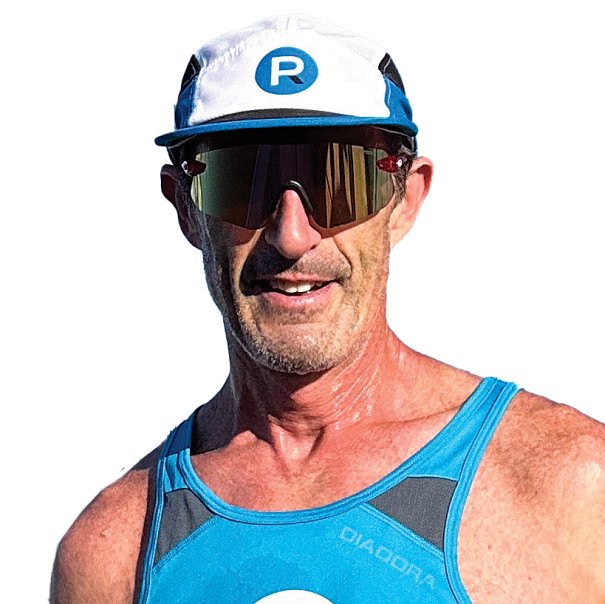
“Pennypack Trail is endless flat, hard-packed dirt. It’s on the outskirts of Philly and continues past Southampton. I also like the Cynwyd Heritage Trail, and Peace Valley Park is a beautiful six-mile loop.”
Public Running Tracks
Find our guide to public running tracks here!
Published as “Run This Town” in the 2025 issue of Be Well Philly.


